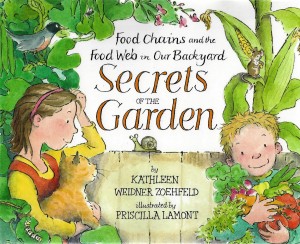We Have New Books in the Library
by Janet Woody, Librarian, Lewis Ginter Botanical Garden
The Pocahontas Chapter of the Virginia Native Plant Society, a mission-related group that meet here at Lewis Ginter Botanical Garden, recently gave the Lora Robins Library funding to purchase books about native plants and related topics. We were able to acquire five new titles you might be interested in. We are very grateful to our VNPS plant partners for their generous donation.
Fall Color and Woodland Harvests: A Guide to the More Colorful Fall Leaves and Fruits of the Eastern Forests is the kind of book you take with you when you hike in the woods. Use it to identify leaves, nuts, pods, flowers, ferns, cones, and all the good stuff you’re likely to see on trees and find on the ground during your hike. Written by botanists C. Ritchie Bell and Anne H. Lindsey, published in 1990 by Laurel Hill Press in Chapel Hill, NC.
Best Native Plants for Southern Gardens: A Handbook for Gardeners, Homeowners, and Professionals by Gil Nelson. This guide to the best native garden plants covers 8 states: from Virginia to north Florida, over to Alabama, Mississippi, and Louisiana. Addresses the history and use of native plants, dealing with invasives, and how best to use native plants in your garden. Plenty of color photos liven up the narrative. Nelson is a writer, naturalist, and field botanist. Published in 2010 by the University Press of Florida.
Appalachian Wildflowers: An Ecological Guide to Flowering Plants from Quebec to Georgia is another book you’ll want to take along on your hikes, particularly if you like admiring wildflowers and want to know what they are. Author Thomas Hemmerly, an ecologist and botanist, wants us to read the landscape to learn about plant habitats, use, and distribution all along the Appalachian range. Published by The University of Georgia Press in 2000.
Plants of the Chesapeake Bay: A Guide to Wildflowers, Grasses, Aquatic Vegetation, Trees, Shrubs & other Flora is the book you take with when you go to eastern Virginia. Which is not to say that you won’t find these plants in central Virginia, because you will. The focus here is on plants that are found near or in water. Written by wetland scientists Lytton John Musselman and David Knepper, this guide offers beautiful photos and detailed descriptions. Published by The Johns Hopkins Press in 2012.
And my personal favorite, because it has chickens, as all good books should, is Secrets of the Garden: Food Chains and the Food Web in Our Backyard. Aimed at elementary-aged children, this book does a great job of showing the joys of planting seeds and anticipating the first sign of leaves, combined with scientific facts about the biology of soil, plants, and the food chain. The humans in the story handle the gardening and the chickens handle the scientific explanations. The drawings are colorful and charming, and the science is fun. Written by Kathleen Weidner Zoehfeld, illustrated by Priscilla Lamont and published in 2012 by Alfred A. Knopf.
Many thanks to our friends at the Pocahontas Chapter of the Virginia Native Plant Society for these and other great books.



